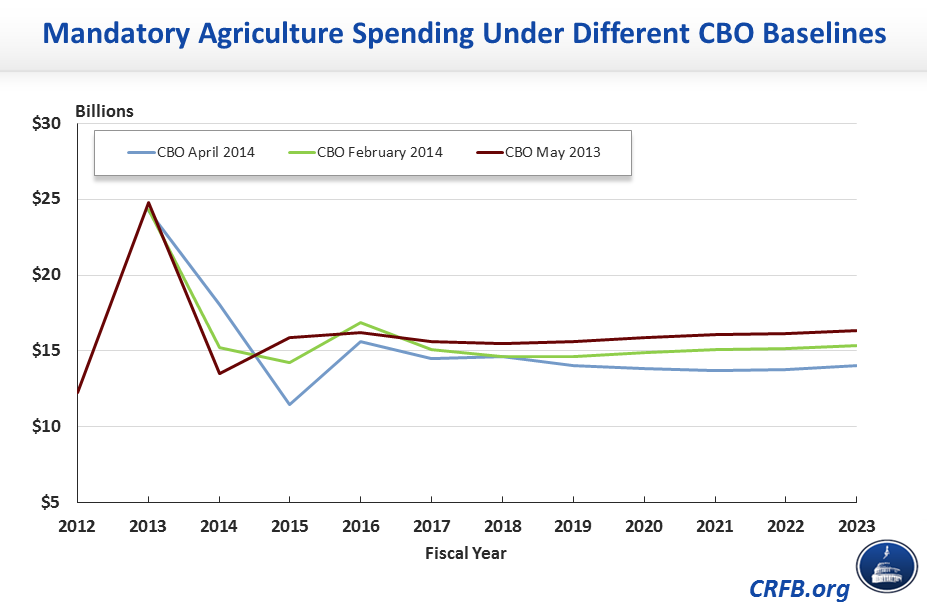Farm Spending in the April 2014 CBO Baseline
CBO recently released an update to its 2014-2024 baseline including the first detailed agriculture projections since May 2013. Since then, Congress passed and the President signed the Agricultural Act of 2014, commonly known as the farm bill. This new law reforms farm support by doing away with the direct payment system, ending payments to farmers based on which crop they grow. Some of those resources are shifted towards increased crop insurance. This baseline is the first to include those legislative changes. The new CBO baseline shows reduced farm spending across most agriculture categories. The chart below compares spending levels from the May 2013 CBO baseline and the April 2014 CBO baseline for farm support programs. This chart does not include nutrition programs such as the Supplemental Nutrition Assistance Program (SNAP), which CBO projects will cost $734 billion from 2014 to 2023, down from $764 billion in last May's projections. The $30 billion reduction reflects both $22 billion due to technical and economic changes in CBO's estimate and $8 billion in changes from the new farm law.
*Commodity Credit Corporation Price Support and Related Programs
**Conservation Program Total
Focusing on just non-nutrition mandatory spending, agriculture outlays are down to $144 billion for the 2014-2023 period under the new CBO baseline. CBO had projected spending levels of $151 billion back in February and $157 billion last May for the same period. Since the effects of the new farm law passed in January were not included in the February 2014 baseline, the $6 billion drop off from May 2013 to February 2014 is a result of technical and economic changes totaling $4 billion and an additional $2 billion from the extension of the sequester under the Ryan-Murray deal. The further decline in projected spending in the April 2014 baseline largely reflects the legislative effects of the new farm law. However, these savings are mostly consistent with the CBO score from January because CBO did not have sufficient new data to update the estimate. Below is a graph comparing year-by-year non-nutrition mandatory agriculture spending under each of the three CBO baselines.
While we support efforts to rein in agricultural and other mandatory spending, it is important to note that the effects of the farm law are highly uncertain. Because modifications and enhancements to programs such as crop insurance, Price Loss Coverage, and Agricultural Risk Coverage have not been implemented yet, CBO’s updated baseline simply incorporates their score of the farm bill rather than updated projections because CBO does not have any new data or other information to re-score the farm bill. As Politico’s David Rogers wrote last week:
But it’s as if the budget analysts are going through withdrawal after living 18 years with the predictability of direct cash payments under prior farm bills. And until producers have made more choices later this year about the new programs, CBO is not putting its name next to more predictions....Thus Monday’s report repeats, without any new detail, CBO’s January estimate of $16.6 billion in savings for the years 2014-2023 — about half from food stamps and half from farm-related expenditures.
Given the risk of uncertain estimates, policymakers should continue to monitor actual farm spending levels and be prepared to make adjustments as necessary. Both President Obama and Chairman Ryan have proposed further reductions in farm subsidies even under the current baseline. These proposals and others should remain on the table for discussion.
